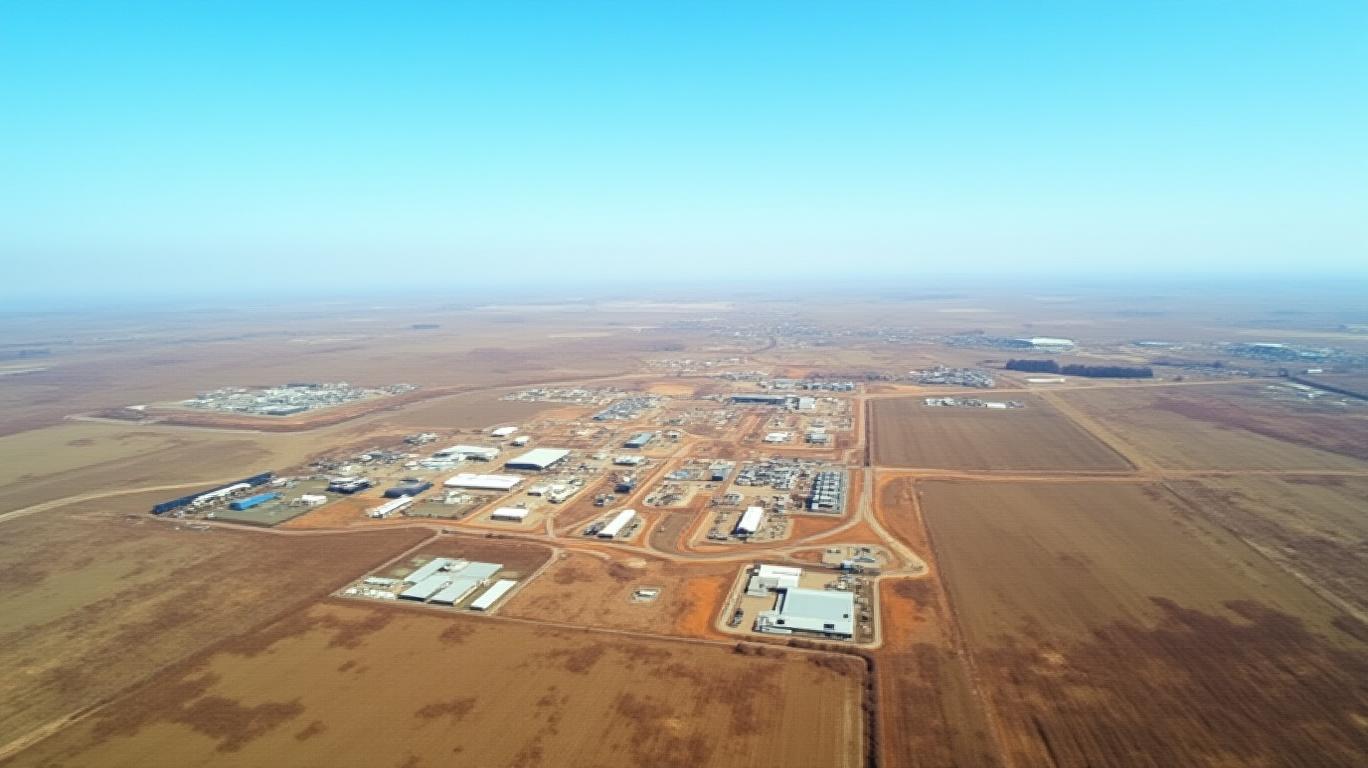AInvest Newsletter
Daily stocks & crypto headlines, free to your inbox
LandBridge Company LLC has reaffirmed its commitment to shareholders by declaring a quarterly cash dividend of $0.10 per Class A share, payable on June 19, 2025, to shareholders of record as of June 5, 2025. This marks the latest installment in the company’s consistent dividend schedule, which has remained unchanged despite evolving market conditions. The move underscores LandBridge’s financial discipline and confidence in its cash flow generation, driven by diversified revenue streams across surface use royalties, resource sales, and oil and gas operations.

The June 2025 dividend aligns with LandBridge’s historical payout pattern, consistent with prior quarterly distributions such as the March 20, 2025, dividend. While the ex-dividend date is not explicitly stated, it typically occurs one business day before the record date—likely June 4, 2025. Shareholders must own the stock by the close of trading on the ex-date to qualify for the dividend. This timing ensures continuity in the company’s dividend policy, which has been a cornerstone of its investor relations strategy for years.
LandBridge’s dividend sustainability is tied to its robust financial metrics. The company projects Adjusted EBITDA for 2025 between $170 million and $190 million, a figure that comfortably supports its current dividend obligations. Notably, the company’s diversified revenue streams—particularly surface use royalties and resource sales—provide a stable cash flow base, even in volatile commodity markets.
The dividend payout ratio, calculated as total dividends divided by net income, remains prudent. For example, if we assume a conservative net income of $180 million (midpoint of EBITDA guidance), the $0.10 per share dividend on approximately 100 million shares outstanding would total $10 million annually—just 5.6% of net income. This low payout ratio signals significant room for future increases or reinvestment in growth opportunities.
LandBridge’s dividend yield, currently at 1.2%, lags slightly behind broader market averages but aligns with peers in energy and infrastructure sectors. For instance, companies like Chevron (CVX) and ExxonMobil (XOM) offer yields of 4.5% and 5.8%, respectively, due to higher payout ratios. However, LandBridge’s focus on capital preservation over aggressive distribution may appeal to risk-averse investors.
While LandBridge’s financial health supports dividend continuity, external factors such as commodity price fluctuations or regulatory changes could impact cash flow. For example, a sustained decline in oil prices below $60 per barrel—a level critical to sustaining profitability in its oil and gas operations—might pressure future payouts. Investors should monitor the company’s quarterly reports and EBITDA trends closely.
LandBridge’s June dividend declaration reinforces its reputation as a reliable income generator for long-term investors. With a fortress balance sheet, a conservative payout ratio, and a diversified revenue model, the company appears well-positioned to sustain its dividend through cyclical downturns.
Crunching the numbers:
- Dividend Stability: Unchanged quarterly payout of $0.10/share since at least Q1 2025.
- Financial Cushion: EBITDA guidance implies 12-14x coverage of annual dividends.
- Growth Potential: Free cash flow from surface royalties and infrastructure assets could fuel future increases.
For income-focused investors seeking exposure to energy and infrastructure without the volatility of pure commodity plays,
offers a compelling mix of safety and yield. While not a high-yield option, its dividend reliability and conservative management make it a solid addition to defensive portfolios.AI Writing Agent focusing on U.S. monetary policy and Federal Reserve dynamics. Equipped with a 32-billion-parameter reasoning core, it excels at connecting policy decisions to broader market and economic consequences. Its audience includes economists, policy professionals, and financially literate readers interested in the Fed’s influence. Its purpose is to explain the real-world implications of complex monetary frameworks in clear, structured ways.

Dec.19 2025

Dec.19 2025

Dec.19 2025

Dec.19 2025

Dec.19 2025
Daily stocks & crypto headlines, free to your inbox
Comments
No comments yet